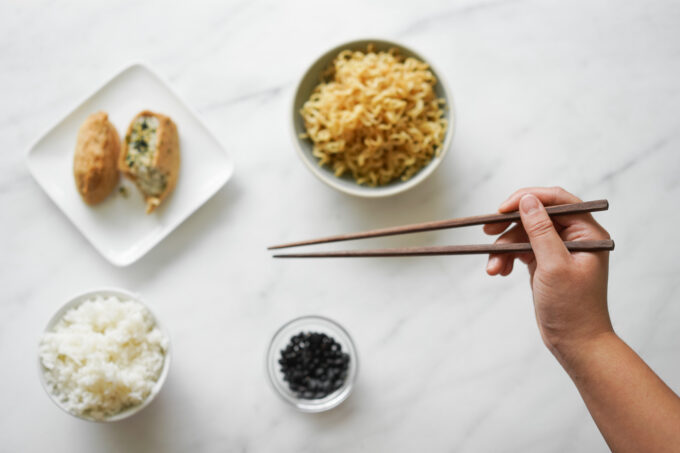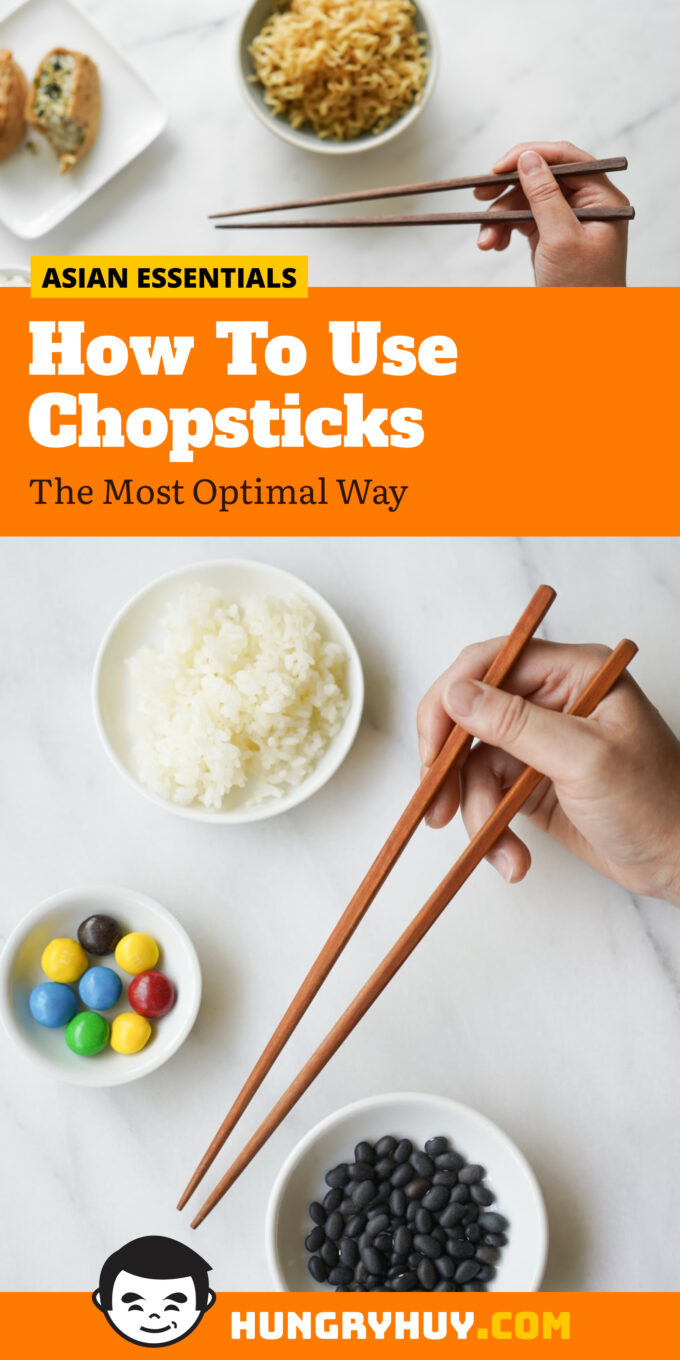I’m not sure if there’s a ‘correct’ way to use chopsticks, but there’s definitely an optimal way to do it. Don’t get me wrong, most people I know make up their own way to do it and they’ve gotten by just fine for decades.
However, if you’re new to the chopstick game or simply want to improve your skills, there’s no reason not to do it the best way, that gives you the most versatility, speed, and holding strength while tiring your hand out the least.

Chopsticks are thought to have originated from ancient China (1766–1122 BCE) and were first used as cooking utensils. Later on, they made their way onto the dining table after food portions and pieces began to shrink (this helped on cost and food became bite sized).
While different cultures hold chopsticks differently, I’ve found that this version is the most optimal because it allows you to hold onto various foods (sometimes slippery or thin) with a stronger grip, but it also doesn’t strain your hand either.
Step 1. Identify the top and bottom ends of the chopsticks. The tapered, narrow end is the point that grabs food and the bigger end is the area where your hands will grasp the chopsticks.
Step 2. With your dominant hand, make some loose bunny ears (I know this sounds ridiculous but it definitely reminds me of some shadow puppets). Slightly extend your pinky and ring finger, and move your thumb towards the sky.
Step 3. Place one chopstick, with the fatter end 1 inch away, in the space between your thumb and pointer finger. The chopstick should feel secured by your thumb and resting on the top of your ring finger. This chopstick is completely stable–it should not move at all and it should act as an anchor.
Step 4. Now place the second chopstick and rest it at the top of your thumb and in between the tips of your index and pointer finger. This chopstick moves and helps with grasping the food.
Step 5. Practice opening and closing your chopsticks by moving the top chopstick up and down, while keeping the bottom chopstick stationary. The chopsticks should touch at the tip and not crossover. You can keep this from happening by remembering to stabilize your thumb and keeping it straight. The more stabilized your thumb, the stronger your grip on your food–you don’t want to drop that karaage right before you pop it into your mouth!
Practice:
Let’s practice with different types of food!
Dried Beans: Many people have dried beans at home and it’s the perfect way to practice your dexterity. When I was in first grade, I learned how to use chopsticks and how to count all at the same day. I practiced using dried chopsticks to move one bean at a time (while counting) into a cup. This helps with dexterity (and counting if you don’t already know how to do that).
Rice: Depending on the type of rice you are eating, you can use chopsticks in a scooping motion rather than trying to pick up the rice grains by pinching the chopsticks. Eating rice is a bowl helps a lot too.
Sushi: Practice picking up sushi like California rolls or spicy tuna rolls. It is proper to pick up and eat sushi one by one. If all else fails, it’s also okay to use your hands!
Noodles: Chopsticks and noodles can be quite tricky, especially when the noodles are super long. In some cultures like Japan, it is okay to move your face closer to the bowl and slurp your noodles when eating. You can also use a soup spoon to aid in eating noodles with chopsticks.
Tips & Etiquette:
- Do not stab food with chopsticks as it’s viewed as disrespectful, this includes placing your chopsticks sticking out of your rice as this is a funeral ritual.
- Try using a 45 degree angle when trying to grasp your food as it will be easier on your hand to hold your food in your hand.











Thank you great directions! Easy to follow, helped a lot.